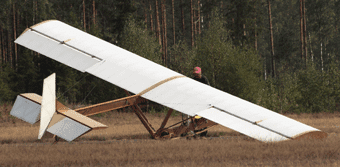Top speed 117 km/h Length 5.72 m | Wingspan 11 m First flight February 1945 | |
 | ||
Pik 7 harakka ii kuivanto aerotow 20 21 8 2011 part ii hd
The Harakka ("European magpie") was a primary glider produced for pilot training in Finland in the 1940s. Its design was typical of this class of aircraft, a "keel" with a pilot's seat suspended beneath a high, strut-braced monoplane wing, and carrying a conventional empennage at the end of an open framework. First flown in February 1945, the type was built from plans by Finnish gliding clubs and soon replaced earlier primary gliders such as the Grunau 9, becoming a standard piece of equipment in the clubs.
Contents
- Pik 7 harakka ii kuivanto aerotow 20 21 8 2011 part ii hd
- Pik 7 harakka ii kuivanto aerotow 20 21 8 2011 part i hd
- Variants
- Specifications Harakka II
- References
In 1946, Raimo Häkkinen and Juhani Heinonen from Polyteknikkojen Ilmailukerho redesigned the Harakka to strengthen it. This improved version became known as the Harakka II or PIK-7. In 1948, a single example of a more radically redesigned version designated Harakka III flew. This had the framework that supported the tail replaced by a single boom.
Examples of the Harakka I and Harakka II are preserved at the Suomen ilmailumuseo and the Karhulan ilmailukerho Aviation Museum, with the sole Harakka III also preserved at the latter museum.
Pik 7 harakka ii kuivanto aerotow 20 21 8 2011 part i hd
Variants
Specifications (Harakka II)
Data from "Harakka II (H-57)"
General characteristics
Performance
